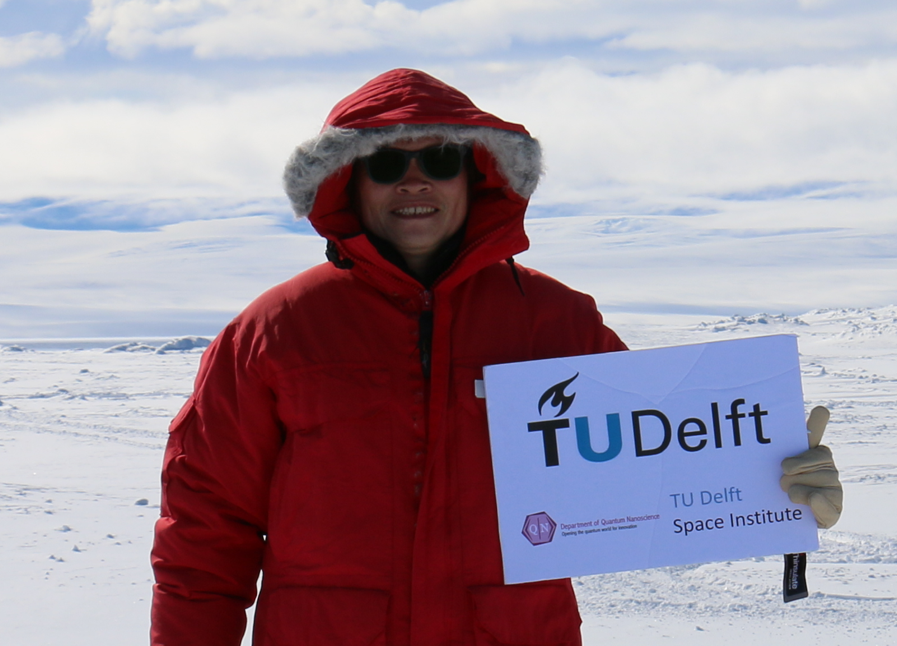In an earlier news item, the launch of the Stratospheric Terahertz Observatory (STO2) was mentioned. The STO2 telescope circled along with the polar vortex 39 km above Antarctica on a giant NASA balloon, to investigate interstellar gas clouds. After three weeks, on December 30th, 2016, the STO2 safely landed back on Antarctica.
During the mission, STO2 measured as much radiation as possible at the frequencies of 1.4 and 1.9 THz to find ionized nitrogen (NII) and ionized carbon (CII) respectively in a part of our Milky Way. These substances trace the life cycle of the interstellar medium, including the star formation.
STO2 had also a 4.7 THz receiver that would measure neutral atomic oxygen (OI). The receiver, consisting of a detector, a novel quantum cascade laser as a local oscillator, and also a stirling cooler, worked as well. However, due to the failure of a communication cable in the electronics box, no command can reach to the receiver, and thus no spectrum has been taken.
TU Delft together with SRON contributed all the detectors and also the 4.7 THz channel local oscillator. The latter is in collaboration with a group at MIT in USA. STO2 project leader, Jian-Rong Gao, and his team are disappointed about no observations of the 4.7 THz channel. Gao serves as a theme leader at TU Delft Space Institute and also works for SRON as a senior instrument scientist. However, they are extremely happy with the success of the other two frequencies, which are the primary goals of the project, and also satisfied with the fact that STO2 has flown nearly three weeks, instead of two weeks of the original target. STO2 was led by the University of Arizona in Tucson. TU Delft and SRON are the only non-American team members for this NASA STO2 project.
More information can be found here.
